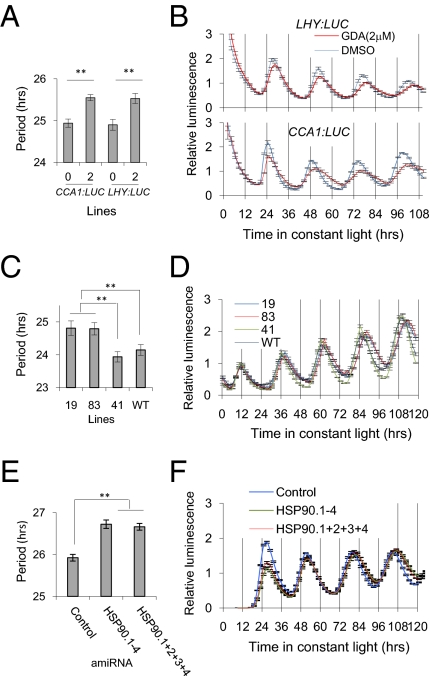Fig. 1.
Reduction in HSP90 lengthens period in Arabidopsis. (A and B) Seedlings were grown in 12 h white light/12 h dark for 5–7 d before release into constant red light (17 μmol m−2 s−1) and imaged for LHY:LUC or CCA1:LUC activity for the indicated time. Free-running period of Arabidopsis seedlings expressing the CCA1:LUC (n = 12) or LHY:LUC (n = 12) reporters treated with 2 μM GDA or DMSO (0) during the imaging. **P < 0.01. (C and D) An RNAi-mediated HSP90-reduced line was crossed with CCR2:LUC, and F3 plants expressing the reporter and positive for the transgene were imaged for CCR2:LUC activity. Lines 19 (n = 46) and 83 (n = 52) displayed characteristic features of HSP90 reduction (multiple branches), whereas line 41 (n = 74) and WT (n = 71) did not. Seedlings grown and imaged as in A and B. **P < 0.01 between indicated comparisons according to Hsu's MCB (multiple comparisons with the best) (Fig. S2A). (E and F) Free-running period under constant red light of CCA1:LUC in Arabidopsis protoplasts simultaneously transiently transfected with CCA1:LUC and amiRNA designed to reduce HSP90 expression. Cytosolic HSP90 expression (HSP90.1–4) was reduced by one (HSP90.1–4) or four simultaneously transfected constructs (HSP90.1+2+3+4). Protoplasts imaged in constant red light for the time indicated. **P < 0.01 between indicated comparisons according to Hsu's MCB (Fig. S2B).

